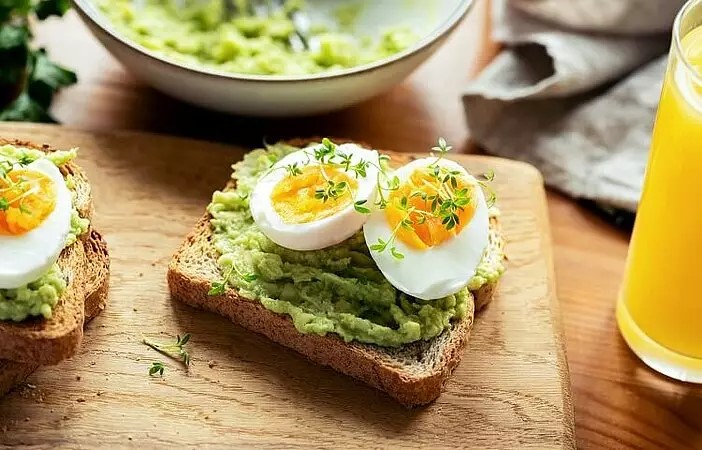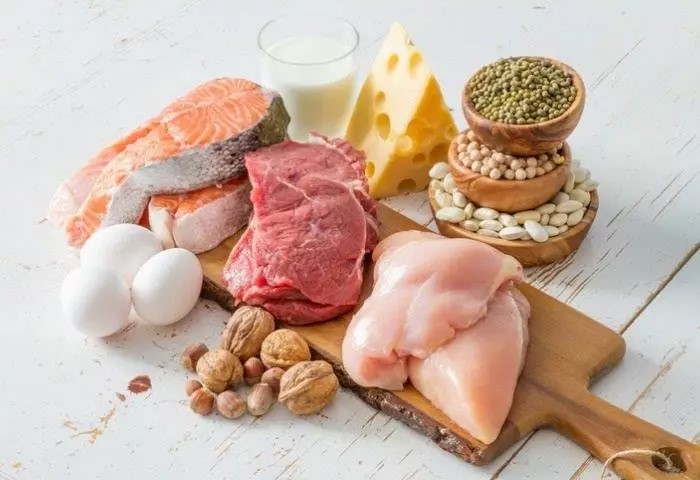
Food with a high biological value
The biological value describes how efficiently a dietary protein can be converted into the body's own protein. As a reference value, one refers to the hen's egg, which has been given the value 100. The higher the value, the less protein is needed to meet one's own amino acid needs.
| Whey Protein | 104 |
| Whole Egg | 100 |
| Beef | 92 |
| Milk | 88 |
| Soya Protein | 86 |
| Yogurt | 83 |
| Quinoa | 82 |
| Poultry | 80 |
| Potatoes | 76 |
| Beans | 72 |
| Almased (soya protein + yogurt) | 158 |
| Whole egg + potatoes | 136 |
| Milk + wheat flour | 125 |
| Whole egg + soya | 123 |
| Milk + potatoes | 114 |
| Beef + potatoes | 113 |
| Soya + rice | 111 |












